The choice of radiator: types, calculation for cast iron and
Residents of apartments in high-rise buildings could find that in some rooms it is warmer, and in some rooms it is cooler in winter. The cause of this phenomenon may not be air in the pipes, or dirt in the gaps, but banal shortages of sections for heating, or installation to the detriment of the heat of exclusive designer heaters of insufficient power. Today we are conducting a choice of heating radiator in terms of area, power, and other key indicators, so that the apartments are warm.

What counts and how
There is a whole set of characteristics and correction factors that allow you to calculate the required number of radiator sections or to make the right choice of panels.
Today we consider:
- Types of batteries, declared design characteristics of heaters;
- Calculation of the number of sections by area;
- Calculation of the power of the boiler for a private house.

For information! Residents of private homes are forced to take care of their own comfortable living, so it will be interesting for them to rely not only on the batteries, but also on the heat source.
Let's start with the views
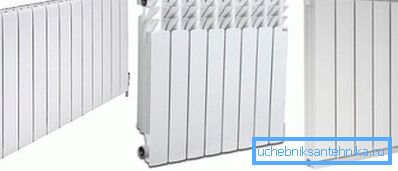
The modern market is replete with heaters of four main types:
- Cast iron - despite their shortcomings, they occupy their niche, and remain quite popular in our time;
- Aluminum - light, modern, powerful enough;
- Bimetallic - the main competitor of cast iron, but in terms of price-quality, inferior to cast-iron counterparts precisely in price policy;
- Steel - excellent panel-type heaters, quickly heat up and quickly give off heat, have proven themselves in the private sector.
And before continuing the explanations on the topic, let's look at another table
| Heater type | Power W / section | Pressure maintained by ATM |
| Cast iron | 80-150 | 10-15 |
| Aluminum | 190 | sixteen |
| Bimetallic | 200 | 35 |
| Steel | 450-5700 | 6-9 |
The table is quite informative. According to it, it is already possible to exclude one radiator from installation in an apartment building with central heating. This is a steel heater. Pressure surges in the network can simply break its structure.
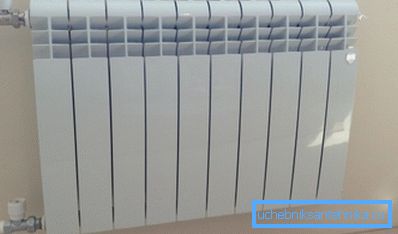
Recommendations! According to the stated characteristics it is clear that the aluminum radiator perfectly replaces the heavy cast iron in the apartment. It's true. There is one very alarming moment: aluminum very poorly transfers various acid additives to the coolant, deforms faster from pressure surges in the network, as it is very soft. By the same principle, it is not recommended to use radiators with copper pipes or aluminum-copper radiators in the central heating system.
And then we need only proven cast iron and bimetallic radiators, we will carry out further calculations on them.
Calculation for cast iron
These calculations are carried out for the whole house using various correction factors for corner apartments, internal, first and last. Also in the calculations takes into account the presence of windows, doors, thickness of floors, and so on.
We do not need this for self-analysis. There is a proven formula that allows you to make a calculation with your own hands and not make a mistake. Here she is:
Sum of sections = (total area of the room / declared power of the section) * 100.
Now we will understand:
- The total area of the room is calculated according to the laws of mathematics by the product of the length and width of the room, calculated in square meters;
- Power section can be viewed in the table. For cast iron, it is better to check with the seller, since you have seen possible fluctuations, it depends on the configuration of the section itself;
- The coefficient 100 came from experimental practice. It is proved, and we take it as an axiom that for heating 1 square meter of housing with ceilings up to 3 meters, 100 watts from a thermal element is enough.
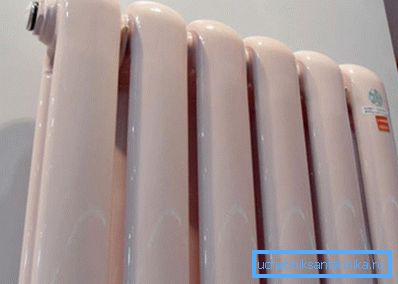
For clarity, we will calculate the required number of radiator sections for cast iron when heating a room of 16 squares. We get 16 * 100/150 = 10.67. In this case, we used the maximum possible power of the cast iron product. And rounding is always done in a big way, even if you got 10.1 pieces, we still take 11 sections.
Tip! For corner rooms, or rooms with two external walls, an additional factor of 1.2 is introduced. For clarity, the same conditions, but the room is angular, we will increase the result by 1.2 times - the result is 12.8 - 13 pieces.
And a competitor?
In the previous sections, we mentioned a decent competition to cast-iron radiators in the form of bimetallic heaters. According to them, the calculation is made, but the first place is not the area, but the volume of the room. The formula is as follows:
Number of sections = amount of heat / power of one section.
Explain:
- A new indicator of the amount of heat is the product of the volume of the room that needs to be heated and the specific energy required for this action;
- The specific energy is taken as 40 W for a regular room and 50 W for a corner room;
- You can calculate the volume of the room yourself, here the instruction is unnecessary.
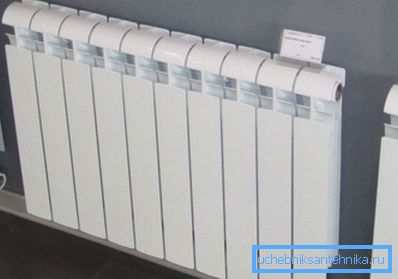
We calculate the number of bimetallic radiator sections for heating a room of 16 squares. We will make the calculation on the ceiling at 2.70, we get - 8.64, that is, 9 sections, for the corner room - 10.8 - 11 sections. If you wish, you can count.
And about the boilers
We have not forgotten about the owners of the houses of the private sector. We give the formula for calculating the power of the boilers. It is as follows: W of the boiler = S * W / 10. Here the total area of your house is multiplied by the rated power (discussed below) and divided by 10.
Now about the estimated capacity:
- For northern terrain - up to 2.0 kW;
- For areas of the center - up to 1.5 kW;
- For the south - up to 0.9 kW.
Making calculations, do all rounding up. There is a power corridor from 1.5 to 2 kW, take 2. It turned out you have 7.1 sections - take 8.
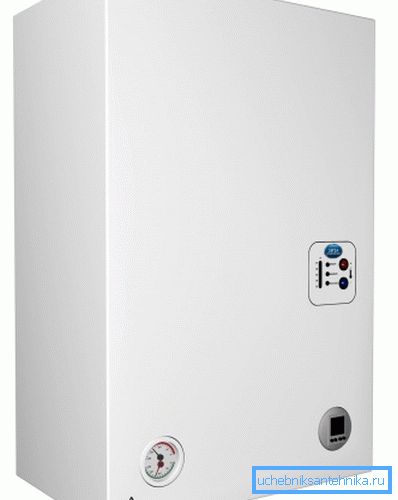
Then the whole calculation for a boiler for a house in the center of the country of 100 square meters will look like this 1.5x100 / 10 = 15 kW.
Finally
Estimated figures are important, depends on the correct selection of the number of heaters, comfortable living in the apartment. The calculated theme will continue the video in this article. Finally, another note.
Note! The presence of properly selected radiators will not protect you from gusts in the system. In order to feel comfortable in all situations, make the choice of an oil radiator as an alternative source of heat. The device is able to cope with force majeure energy.